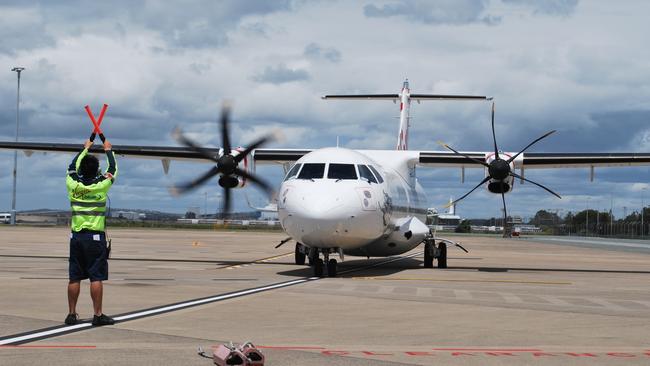Virgin defends safety after turboprop woes
VIRGIN Australia has defended its safety protocols after a regional turboprop aircraft flew with damage to its tail section.

VIRGIN Australia has defended its safety protocols after a regional turboprop aircraft flew for 13 sectors after an inspection by engineers failed to detect significant damage to its tail section.
An Australian Transport Safety Bureau report released this week showed the ATR 72 was damaged during an incident on February 20 but was not grounded until February 25.
The manufacturer subsequently recommended replacing the plane’s horizontal stabiliser, elevators and vertical stabiliser.
Virgin said this week that safety was its top priority and it had “strong protocols in place to ensure the safety of our operations is maintained to the highest standard”.
“While this is an isolated issue, we are working with the ATSB, the aircraft manufacturer and our maintenance provider to identify what has occurred,’’ it said.
The plane began flying abnormally on approach to Sydney on February 20 and the incident was serious enough to injure a senior cabin crew member, prompt the pilots to request an ambulance and make a PAN call, a level below a full-blown emergency.
The ATSB was advised initially of a turbulence-related event and began an investigation because of the injuries to the flight attendant.
Two aircraft engineers from Virgin’s contract maintenance operator were told that the pilots were not sure what had happened but the aircraft’s pitch controls had disconnected and there had been a possible overspend, where the aircraft’s airspeed exceeds safe working limits.
The engineers established that the plane had been subject to a force of 3.34 times the force of gravity and exceeded the acceptable weight limit for the aircraft.
It was removed from service to be inspected and the two engineers brought in a third colleague to continue the inspection overnight.
The third engineer was led to understand that a turbulence inspection had been requested after the pitch controls had disconnected in moderate turbulence.
He also understood that one of the duty engineers had done quite a detailed walk-around of the aircraft in daylight and found no signs of defects.
The manufacturer specified in this case a general visual inspection of the fuselage, stabilisers and wings, with more detailed inspections if any anomalies were found, as well as a more detailed inspection of the wing attachment fittings.
The third engineer borrowed a nearby stand and inspected the upper surface of the wing, rear fuselage and tail by torchlight before finishing work and returning the next morning.
“No defects were identified from any of the inspections and the aircraft was returned to service the next day,’’ the ATSB said.
The issue re-emerged on a Sydney-Albury flight on February 25 when the aircraft passed close to a flock of birds. While there were no indications that a bird had struck the aircraft, its pitch trim system fluctuated abnormally.
“The captain conducted a walk-around inspection with an expectation of bird damage to the left side of the aircraft,’’ the ATSB said. “The only abnormality found was a deformity to a fairing at the top leading edge of the vertical stabiliser, which might have been the result of a birdstrike. The captain advised maintenance watch, who dispatched an engineer to inspect the aircraft.’’
That engineer used scissor lift equipment to inspect the tailplane and confirmed that the fairing might have been damaged by a bird but that there was also significant structural damage on top of the tailplane. The aircraft was grounded and the ATSB began investigating.
Its initial examination of recorded data found that both the first officer and captain initially pulled on the control column but shortly afterwards, as the vertical load factor was increasing through 1.8G, the first officer began to push the control column.
“The differential force on the control column that resulted from the captain and first officer applying an opposing force exceeded the differential force required to generate a pitch disconnect,’’ the report said. “Each pilot was then controlling the elevator on their side of the aircraft in opposite directions for a brief period before the first officer released his control column.’’
Damage included broken carbon components, cracked joint sealant, a deformation in and around the area where the horizontal stabiliser attaches to the vertical stabiliser and some minor damage to the rudder.
“The damage was assessed as being consistent with an overstress condition. Subject to further assessment and non-destructive testing, the aircraft manufacturer recommended replacement of the horizontal stabiliser, elevators, and vertical stabiliser,’’ the report said.
The investigation continues.


